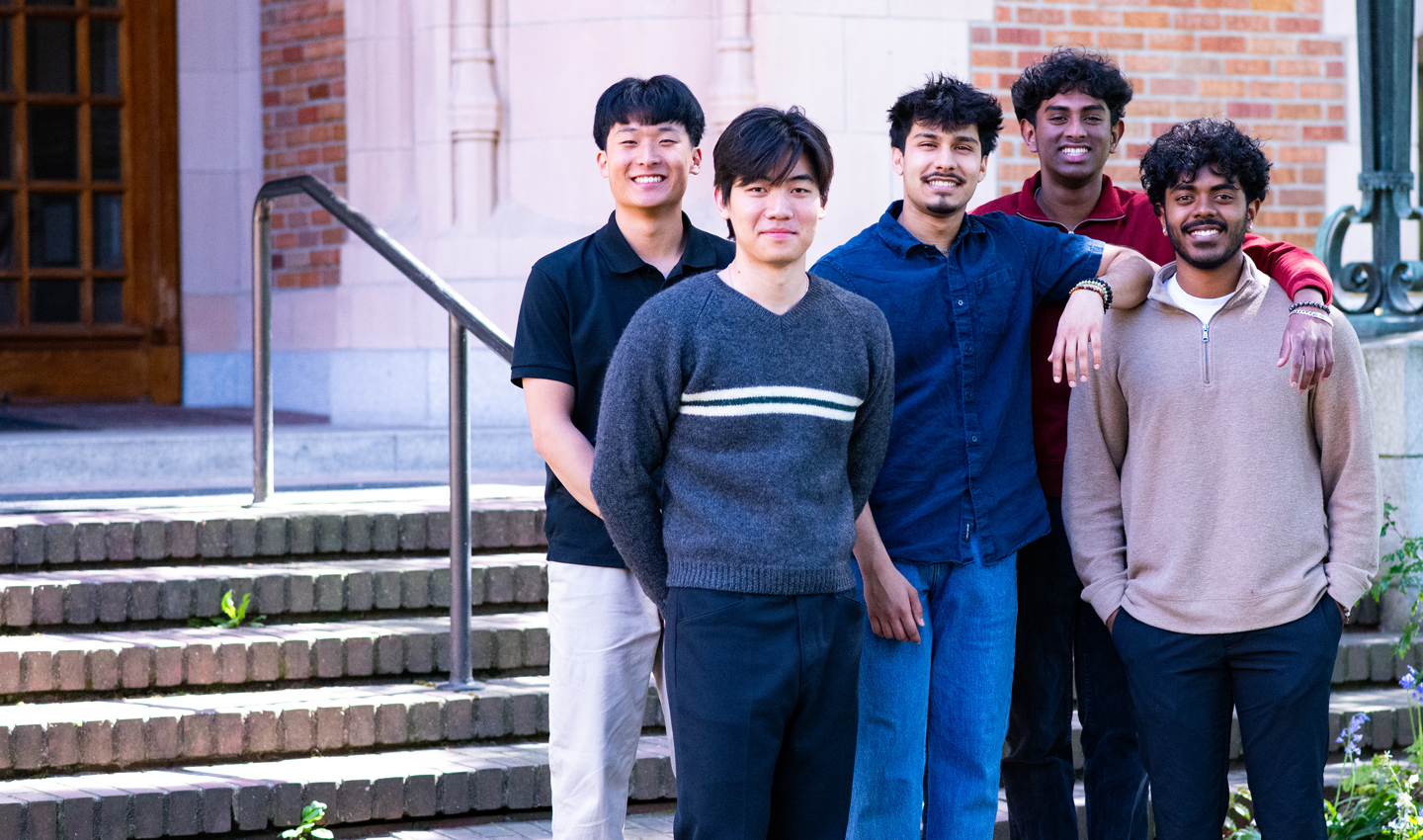In today’s fast-paced work environment, managers often look for tools to make their jobs easier. For someone managing a large team, wouldn’t it be nice to have a tool that regularly provides summarized feedback about each employee? Then they'd know who's raking in the kudos among co-workers.
That’s a scenario five University of Washington iSchool students are bringing to life as part of their Capstone project, working in conjunction with a California-based company.
Informatics students (pictured, from left) Mason Koh, Kai Andreic, Asad Jaffery, Joshua Williams and Vaibava Venkatesan collaborated with Recognize, a company offering an employee recognition platform with the goal of fostering workforce appreciation.
“It’s an employee-based recognition system,” Andreic said. “We are using a standalone project that Recognize can implement into their own system.”
Andreic’s main role in the project was as a UX designer – designing the main page that managers see when they look at a summarization of an individual employee’s “recognitions” over a specific time period. Jaffery and Venkatesan worked as the main developers while Williams and Koh served as the designers.
Recognize is “really doing a cool thing,” Jaffery said. “We’re building a level on top of what they’re already doing.”
Customer managers can use the Recognize product developed by these iSchool students to access a dashboard with five visualizations pertaining to each employee based on input received from co-workers. The visualizations can include metrics like leadership and on-time performance.
“The really cool part is this could be a cookie-cutter solution, but adding AI makes it unique,” Jaffery said. “We’re really doing some cutting-edge work.”
The use of AI sets the students’ project apart from other employee-based recognition systems. After the “recognitions” are received about an employee, AI generates a summarization monthly. If a certain employee hasn’t received many recognitions, the system prompts their manager to provide feedback.
Employees can receive recognition, which is communicated to their supervisors, in a variety of ways, including through award badges or monetary recognition such as gift cards or company swag, said Zach Grande, a Recognize software engineer who oversaw the students’ project.
“Recognize is a company focused on workplace culture,” Grande said.
Managers often don’t have a way to easily look at employee data when performance review time rolls around, he said.
“We wanted an easy way for a manager to come in and see a snapshot of an employee’s performance,” Grande said. The company’s platform also allows managers to pinpoint problems and identify solutions in an employee’s work.
One of the goals of the project was to provide both quantitative and qualitative information about employees, Informatics student Andreic said. Quantitative recognitions alone could be seen as a popularity contest and polarize employees. For example, one employee may work only with a few others but work on significant projects. Another employee may work with many people but on less complex or less time-consuming projects and, therefore, would have a larger base of co-workers who could send recognitions.
The overall goal of Recognize’s platform is to increase productivity and employee engagement without increasing competitiveness between workers, Andreic said.
For Jaffery and Venkatesan, their challenge was to find the right data and figure out the right way to display it. The experience is something that the two wouldn’t typically have until years into their careers, Jaffery said.
Venkatesan noted the iSchool students bring “a fresh pair of eyes on their product” to Recognize.
“We wanted it to be really user-friendly, not technical,” he said.
He and Jaffrey conducted user accessibility testing to ensure any user, no matter how technologically unsavvy, could use their program.
“I felt like a real software engineer,” Venkatesan said. “This project really taught me how to write clean, production-level code. I think this will definitely help me get a job in the future.”
Williams describes his role as “here and there” on the project. He and Koh have been working on usability testing with the wireframes developed by Andreic.
“The dashboard was initially very information rich,” Koh said. “We found we could do more with less.”
He said the process of deciding which information to include was collaborative, with Andreic taking the lead on determining which information was wanted. Koh and Williams refined that through the user testing.
Overall, the students said they garnered experience from collaborating with Recognize that they wouldn’t expect to receive until several years into their careers.
“We got some real-world collaboration,” Williams said.
“That experience was magic,” echoed Koh.
